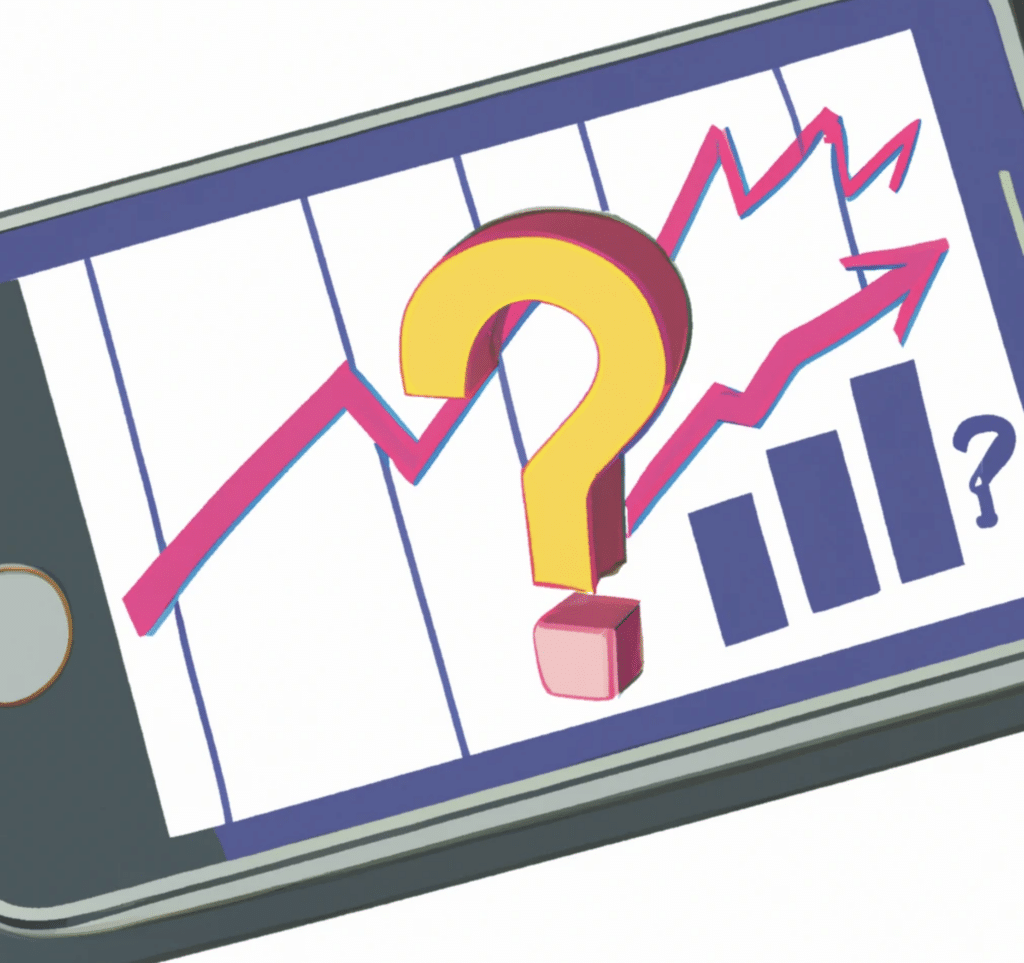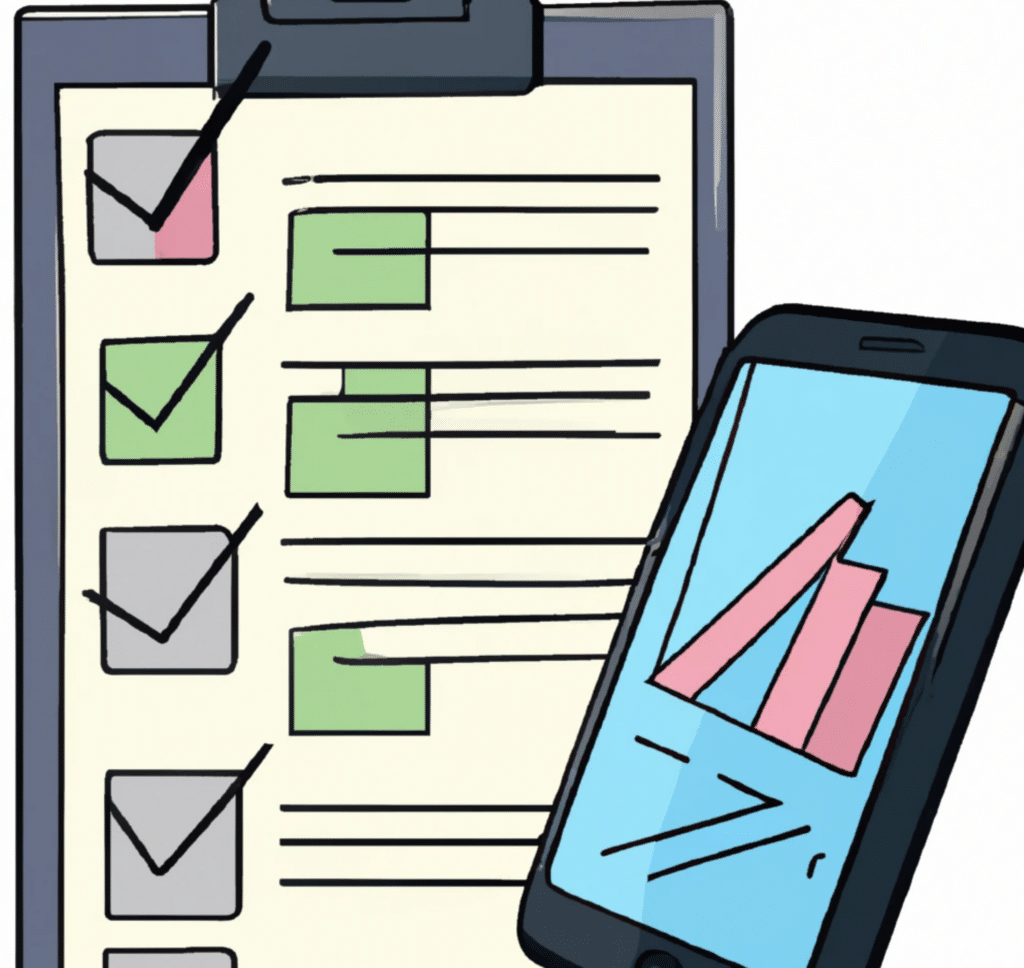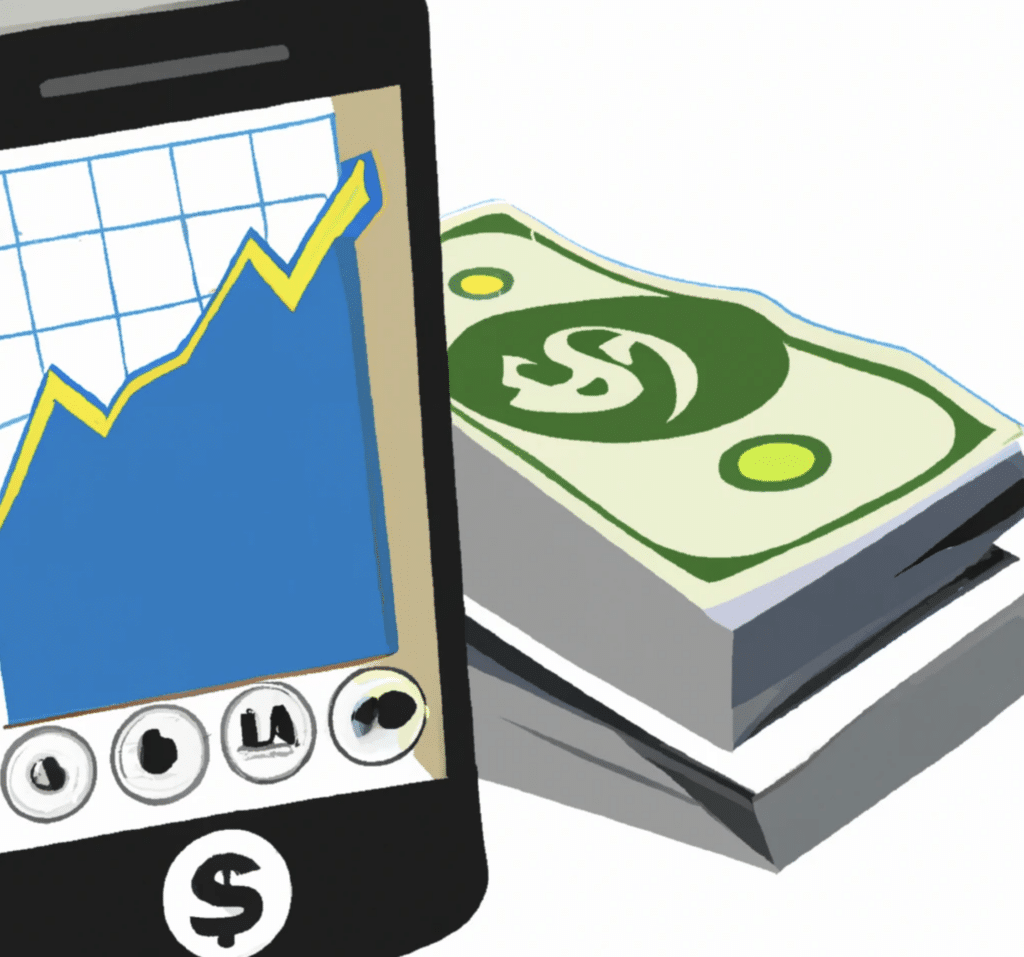Mobile Trading Apps – Essential Tips for Beginners
The world of finance has undergone a digital transformation, and at the forefront of this revolution is mobile trading. Gone are the days when trading was confined to stock exchange floors or over the phone. Today, with just a few taps on a smartphone, anyone can dive into the global markets.
- 1. Brief on the rise of mobile trading
- 2. Why Mobile Trading?
- 3. Choosing the Right Mobile Trading App
- 4. Security First
- 5. Getting Started: A Step-by-Step Guide
- 6. Decoding the Jargon
- 7. Making Your First Trade
- 8. Mistakes to Avoid
- 9. Advanced Features to Explore
- 10. Benefits of a Demo Account
- 11. Tips for Successful Mobile Trading
- 12. Handling Losses
- 13. Exploring Different Markets
- Conclusion
1. Brief on the rise of mobile trading
The last decade has witnessed an exponential rise in mobile trading. With the proliferation of smartphones and high-speed internet, trading has become more accessible than ever. No longer restricted by geographical boundaries or time zones, traders can now access global markets 24/7, right from the comfort of their homes or while on the move.
Importance of being well-informed before starting
While mobile trading offers unparalleled convenience, it’s not without its challenges. The volatile nature of markets demands a well-informed approach. Before embarking on your trading journey, it’s crucial to arm yourself with the right knowledge, strategies, and tools. Remember, a well-informed trader is a successful trader.

2. Why Mobile Trading?
Mobile trading isn’t just a trend; it’s a game-changer. But what makes it so appealing?
Convenience on the go
Life is fast-paced, and so are the markets. Mobile trading apps allow you to trade anytime, anywhere. Whether you’re commuting, on a lunch break, or just lounging at home, the markets are always at your fingertips.
Real-time tracking
With mobile trading apps, you’re always in the loop. Real-time tracking features allow you to monitor market movements, track your portfolio, and make timely decisions.
Quick decision making
Speed is of the essence in trading. Mobile apps offer instant notifications, ensuring you never miss out on a lucrative opportunity. With quick access to market data and seamless transaction capabilities, you can act on market trends in real-time.
3. Choosing the Right Mobile Trading App
With a plethora of mobile trading apps available, how do you pick the right one?
Features to look for
Not all trading apps are created equal. Look for apps that offer a range of features, from advanced charting tools to diverse order types. Additionally, consider apps that provide educational resources, ensuring you’re always learning and growing as a trader.
Importance of a user-friendly interface
A cluttered or complex interface can be a trader’s worst nightmare. Choose an app with a clean, intuitive design that allows for easy navigation. After all, in the fast-paced world of trading, every second counts.
Reviews and ratings: Why they matter
Before downloading an app, take a moment to read user reviews and check ratings. These can provide valuable insights into the app’s performance, reliability, and user experience. Remember, the best trading app is the one that aligns with your trading needs and goals.
4. Security First
In today’s digital landscape, ensuring security is paramount. As you embark on your mobile trading journey, it’s essential to be aware of potential risks and take proactive measures to safeguard your investments and personal data.
Understanding Mobile Trading Risks
| Risk | Description |
|---|---|
| Phishing scams | Cybercriminals disguise as trustworthy entities to steal sensitive data. |
| Malware & Spyware | Malicious software that can compromise your device and data. |
| Unsecured Wi-Fi | Public networks can be hotspots for cyberattacks. Avoid trading on these networks. |
Ensuring Your App is Secure
| Security Feature | Why It Matters |
|---|---|
| End-to-end encryption | Ensures data is scrambled and unreadable to hackers. |
| Regular app updates | Patches vulnerabilities and enhances security. |
Personal Security Measures
| Measure | Benefit |
|---|---|
| Two-factor authentication | Adds an extra layer of security. |
| Strong passwords | The first line of defense against unauthorized access. |
| Account monitoring | Detect suspicious activity early. Monitoring tools |

5. Getting Started: A Step-by-Step Guide
Embarking on your mobile trading journey can be exhilarating. Here’s a structured roadmap to guide you:
Profile Setup
| Action | Details |
|---|---|
| Enter personal details | Crucial for verification and security checks. |
| Set a strong password | Your primary defense. |
| Customize profile | Tailor your experience for efficiency. |
Banking and Financial Details
| Action | Details |
|---|---|
| Link bank account | Ensure a secure link for smooth transactions. |
| Understand limits & fees | Be aware of transaction boundaries and associated costs. |
| Learn withdrawal & deposit procedures | Familiarize yourself with seamless transactions. |
Navigating the Dashboard
| Feature | Purpose |
|---|---|
| Feature Overview | Familiarize yourself with tools for effective trading. |
| Set up watchlists | Monitor specific assets or stocks closely. |
| Activate alerts | Feature Overview |
6. Decoding the Jargon
Trading comes with its unique language. Let’s simplify some common terms:
Essential Terms for Every Trader
| Term | Definition |
|---|---|
| Buy, sell, bid, ask | Core actions and offers in the market. Deep dive |
| Bullish vs. bearish | Bullish indicates rising prices, bearish signifies falling prices. |
| Leverage & margin | Bullish indicates rising prices, and bearish signifies falling prices. |
Advanced Terminologies
| Term | Definition |
|---|---|
| Candlestick charts | Visual representation of price movements. Learn more |
| Moving averages | Statistical calculation to analyze data points. |
| Stop-loss orders | Automated orders to sell an asset at a specific price. Order insights |
Glossary for Quick Reference
An alphabetical list of common terms with brief definitions is available here. Dive deeper into specific topics to enhance your trading knowledge.
7. Making Your First Trade
Taking the plunge into the world of trading can be both exciting and nerve-wracking. Here’s a guide to ensure your first trade is well-informed and strategic:
Market orders vs. limit orders
- Market Orders: This is an order to buy or sell a security at the current market price. It’s executed immediately, ensuring you get into or out of a trade swiftly.
- Limit Orders: This allows you to specify the maximum price you’re willing to buy or the minimum price you’re willing to sell. It gives you more control but isn’t guaranteed to execute if the market doesn’t reach your specified price.
The importance of research
Before making any trade, it’s crucial to do thorough research. Understand the asset you’re trading, the market conditions, and any external factors that might influence the price. Knowledge is power, and in trading, it can be the difference between profit and loss.
Setting realistic expectations
While stories of overnight millionaires might be enticing, it’s essential to set realistic expectations. Understand that trading involves risks, and it’s as much about minimizing losses as it is about maximizing gains.
8. Mistakes to Avoid
Even seasoned traders can make mistakes, but being aware of common pitfalls can help you navigate the trading world more confidently:
Overtrading
It’s easy to get caught up in the excitement and make numerous trades in a short time. However, overtrading can lead to significant losses, especially if each trade isn’t well-thought-out.
Ignoring fees
Each trade comes with associated fees. While they might seem small, they can accumulate over time and eat into your profits. Always factor in any fees or commissions when calculating potential returns.
Emotional trading
Trading based on emotions rather than data and research can lead to rash decisions. Whether it’s the fear of missing out or the panic from a market downturn, it’s essential to keep emotions in check and trade logically.
9. Advanced Features to Explore
As you become more comfortable with trading, there are advanced features and tools that can enhance your trading strategy:
Stop-loss orders
This is an order placed with a broker to buy or sell once the stock reaches a certain price. It’s a great tool to prevent large losses in volatile markets.
Charts and analytical tools
Visual tools like charts can help you spot market trends, while analytical tools can provide insights into potential future movements. Familiarize yourself with these to make more informed trading decisions.
Automated trading
Some platforms offer automated trading, where trades are made based on a set of criteria without the trader’s intervention. It’s a way to ensure you don’t miss out on potential opportunities, even if you’re not actively monitoring the markets.
10. Benefits of a Demo Account
Before diving into the real markets, consider starting with a demo account:
Practicing without real money
A demo account allows you to trade with virtual money, giving you a feel for the platform and the markets without any real financial risk.
Understanding market dynamics
Use the demo account to understand how different factors influence the markets, test out strategies, and learn from any mistakes without any real-world consequences.
11. Tips for Successful Mobile Trading
Mobile trading offers unparalleled convenience, but success requires more than just a good app. Here are some tips to enhance your trading journey:
Staying Updated
- Importance of daily market news: Markets move with the news. Stay informed about global events, economic indicators, and company announcements.
- Subscribing to reliable financial news sources: Ensure your information comes from credible sources to make informed decisions.
- Setting up news alerts specific to your portfolio: Get real-time updates on assets you own or are interested in.
Continuous Learning
- Joining online trading communities: Engage with peers, share insights, and learn from collective experiences.
- Attending webinars and workshops: Deepen your knowledge and stay updated with the latest trading strategies.
- Reading books and articles from trading experts: Gain insights from those who’ve achieved success in the markets.
Networking
- Benefits of connecting with experienced traders: Learn from their experiences, mistakes, and successes.
- Joining local and online investment clubs: Collaborate, share insights, and get diverse perspectives on market trends.
- Participating in forums and discussion boards: Engage in meaningful discussions, ask questions, and share your knowledge.

12. Handling Losses
Losses are an inevitable part of trading. How you handle them can determine your long-term success:
Psychological Aspects of Trading
- Dealing with stress and anxiety: Trading can be stressful. Find coping mechanisms that work for you, be it meditation, exercise, or simply taking a break.
- Avoiding impulsive decisions: Emotional trading often leads to losses. Always base your decisions on research and strategy.
- Importance of taking breaks: If the market is taking a toll on your mental well-being, step back and take a break.
Strategies to Minimize Losses
- Setting a budget and sticking to it: Determine how much you’re willing to invest and potentially lose. Stick to this budget.
- Diversifying your investment portfolio: Don’t put all your eggs in one basket. Spread your investments across different assets.
- Using stop-loss orders effectively: Limit potential losses by setting a price at which you’ll automatically sell an asset.
Seeking Expert Advice
- When to consult a financial advisor: If you’re unsure about an investment or need a second opinion, consult a professional.
- Benefits of mentorship in trading: A mentor can provide guidance, share their experiences, and help you navigate the complexities of the market.
- Recognizing when you’re out of your depth: If a particular market or asset feels too complex, it’s okay to step back and learn more before diving in.
13. Exploring Different Markets
The world of trading is vast. Here’s a brief overview of some popular markets:
Stock Market
- Basics of stock trading: Buy shares of a company and benefit from its growth and dividends.
- Blue-chip vs. penny stocks: Blue-chip stocks are shares of large, well-established companies, while penny stocks are shares of smaller companies with more volatility.
- Importance of company research: Before investing, understand the company’s financial health, growth prospects, and industry position.
Forex Market
- Understanding currency pairs: Forex trading involves buying one currency while selling another.
- Factors influencing currency values: Economic indicators, geopolitical events, and interest rates can influence currency values.
- Time zones and their impact on trading: The forex market is open 24 hours, but not all those hours are active and offer the best opportunities.
Cryptocurrency
- Introduction to digital currencies: Digital or virtual currencies that use cryptography for security.
- Risks and rewards of crypto trading: Cryptocurrencies can be highly volatile, offering both significant risks and rewards.
- Staying updated with crypto regulations and news: Cryptocurrency regulations can vary by country and impact your trading strategies.
Conclusion
As we’ve journeyed through the essentials in this article, a few key takeaways stand out:
- Staying Updated: The financial world is dynamic, with markets moving in response to global events, economic indicators, and company announcements. Regularly checking reliable financial news sources will make sure you’re always in the loop.
- Security: In the digital age, safeguarding your investments and personal data is paramount. From understanding potential risks like phishing scams to personal measures like two-factor authentication, security should always be a top priority.
- Continuous Learning: The world of trading is vast and ever-evolving. Whether it’s understanding the basics of stock trading, diving into the complexities of the forex market, or exploring the volatile world of cryptocurrencies, there’s always something new to learn. Resources like FxExplained’s Trading Strategies can be invaluable in this continuous learning journey.
- Networking and Community: Engaging with peers, joining online communities, and seeking mentorship can provide fresh perspectives, insights, and guidance as you navigate the trading world.
- Handling Losses: Losses are an inevitable part of trading. Developing a resilient mindset, setting clear budgets, and seeking expert advice when needed can help you navigate the rough patches.
The world of mobile trading is at your fingertips, offering endless opportunities. However, with these opportunities come challenges. The key to navigating them successfully is continuous learning. Embrace the journey, stay updated, and remember: every trader, no matter how experienced, started as a beginner. With dedication, perseverance, and a thirst for knowledge, the road to trading success is yours to travel.